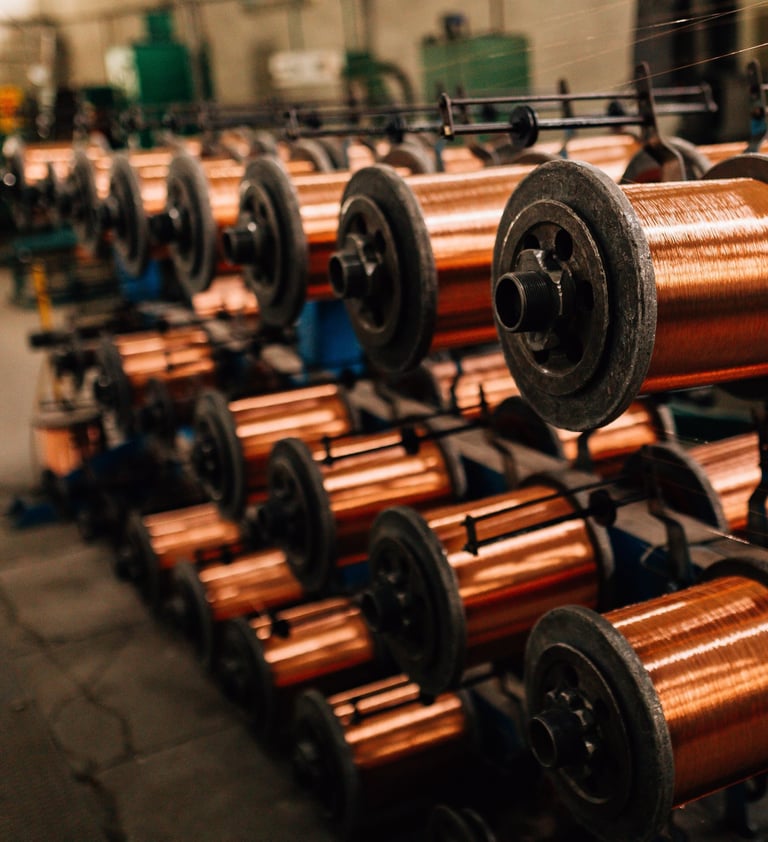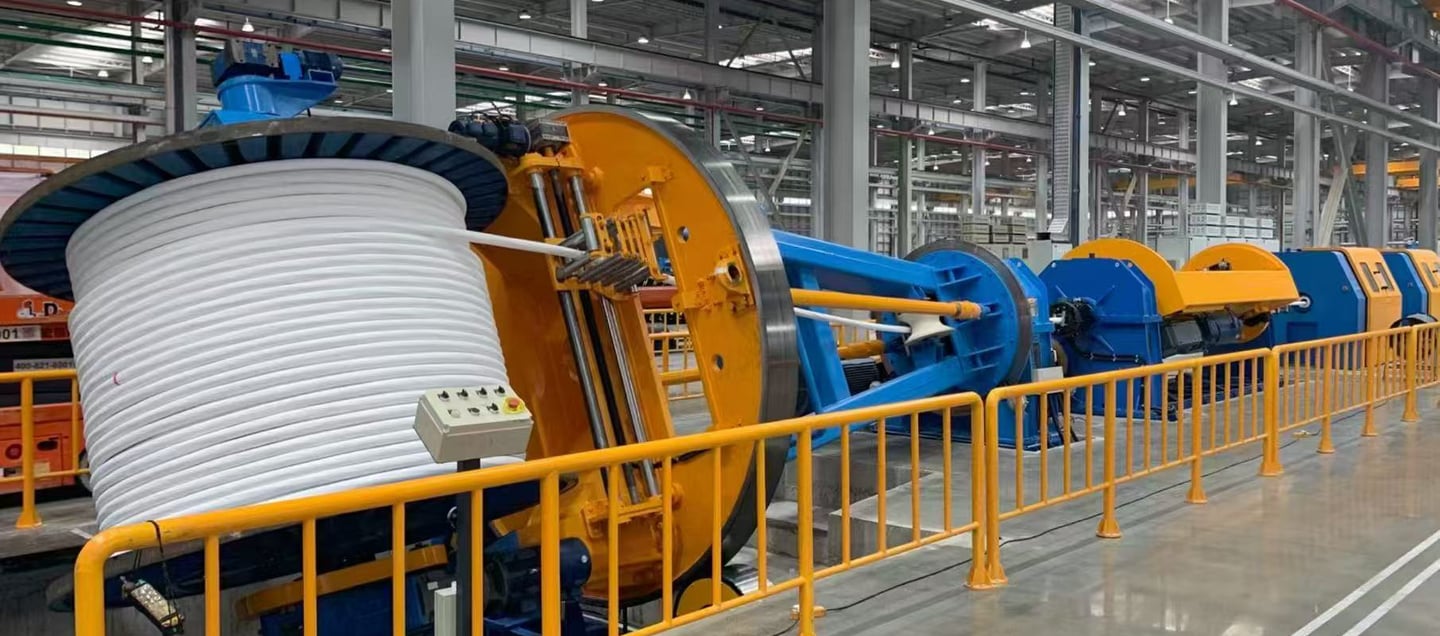Understanding Type 441 (Class 1) Mining Cables: Australia's Standard for 3.3 to 22kV Applications
The AS/NZS 2802:2000 standard is a comprehensive framework that governs the construction, testing, and performance requirements for reeling and trailing cables specifically designed for mining applications across Australia and New Zealand. This standard covers voltage ratings from 1.1 kV up to 22 kV, ensuring safety and reliability in some of the world's most demanding industrial environments.
5/15/20255 min read
Understanding Type 441 (Class 1) Mining Cables: Australia's Standard for 3.3 to 22kV Applications
Introduction
The AS/NZS 2802:2000 standard is a comprehensive framework that governs the construction, testing, and performance requirements for reeling and trailing cables specifically designed for mining applications across Australia and New Zealand. This standard covers voltage ratings from 1.1 kV up to 22 kV, ensuring safety and reliability in some of the world's most demanding industrial environments.
Type 441 Class 1 cables represent a specialized category within this standard, featuring lower insulation and sheath radials compared to their Class 2 counterparts. These semiconductive-screened, flexible mining cables are engineered with one central pilot core and three earth cores arranged in a semiconductive cradle, providing exceptional mechanical protection and resistance to crushing and squashing forces common in mining operations.




Application Scenarios
Underground Mining
Type 441 cables excel in underground mining environments where they serve as trailing cables for mobile machinery including draglines, shovels, and drills. These environments present significant challenges including abrasion, crushing, and repeated bending that can quickly damage standard cables. The semiconductive cradle design of Type 441 cables provides crucial protection against these mechanical stresses, extending operational life in these harsh conditions.
Surface (Open-Cut) Operations
In open-cut mining operations, Type 441 cables provide reliable power feeds to large mobile equipment. The extra-heavy duty PCP (polychloroprene) sheath offers excellent resistance to ultraviolet radiation, weather exposure, and the extreme temperature variations experienced in open-pit environments, making these cables ideal for surface mining applications.
Tunneling and Infrastructure Projects
The flexibility of Type 441 cables makes them particularly suitable for tunneling operations and infrastructure projects. Their design allows for easy reeling on winches, providing both temporary and fixed power supplies in tunnel construction. The ability to withstand wet conditions and physical abuse makes them a preferred choice for contractors working in confined underground spaces.
Medium-Voltage Distribution Networks
These cables support medium-voltage distribution systems at 3.3, 6.6, 11, and 22 kV, bridging the gap between switchgear and mobile equipment across mining sites. Their robust construction ensures reliable power delivery even under the most demanding operational conditions.
Electrical & Mechanical Parameters
Voltage Ratings
Type 441 Class 1 cables are available in several nominal voltage ratings:
3.3 kV (Type 441.3)
6.6 kV (Type 441.6)
11 kV (Type 441.11)
22 kV (Type 441.22)
Each voltage class features appropriate insulation thickness to maintain safety margins and electrical integrity under operating conditions.
Conductor Details
The conductors are manufactured from flexible stranded tinned annealed copper, complying with AS/NZS 1125 standards. They are available in cross-sectional areas ranging from 16 mm² to 300 mm², with the specific size selection depending on load requirements and voltage drop considerations.
For example, a typical 16 mm² conductor offers a DC resistance of approximately 3 Ω/100 m, while larger 300 mm² conductors provide significantly lower resistance for high-power applications.
Insulation & Sheathing
Insulation: Type 441 cables utilize Ethylene-Propylene Rubber (EPR) insulation, which offers excellent electrical properties, water resistance, and chemical stability. The insulation thickness varies according to voltage rating, ranging from 2.2 mm for 3.3 kV cables to 7.6 mm for 22 kV models.
Sheath: The extra-heavy duty PCP (polychloroprene) sheath provides outstanding mechanical protection along with resistance to oils, flames, and environmental factors. Alternative CPE/CSP (chlorinated polyethylene/chlorosulfonated polyethylene) sheaths can be provided upon request for specialized applications requiring different chemical resistance profiles.
Construction Features
A key design element of Type 441 cables is the semiconductive cradle that supports the power cores. This feature significantly reduces the risk of damage from crushing and squashing forces. Additionally, the cables incorporate:
Conductor screen of semiconductive compound for voltage ratings of 3.3/3.3kV and above
Insulation screen made of semiconductive elastomer
Three interstitial earth conductors with semiconductive PCP covering
One central extensible pilot with EPR covering
Open-weave braid reinforcement for added tensile strength
Thermal Performance
Type 441 cables maintain operational integrity across a wide temperature range, from -25°C to +90°C under continuous operation. During short-circuit conditions, they can withstand temperatures up to approximately 250°C for limited periods (typically 5 seconds), providing critical safety margins during fault conditions.


Common Mining Cable Issues & FAQs
What causes cable damage underground?
Underground mining environments present multiple hazards to cable integrity, including abrasion from rough surfaces, crushing by heavy equipment, and mechanical fatigue from repeated bending and flexing. Type 441's combination of PCP sheath and semiconductive cradle construction specifically addresses these risks, providing extended service life compared to standard cables.
Can Type 441 cables be repaired on-site?
Yes, these cables can be repaired in the field using certified EPR-compatible repair kits and heat-shrink joints. However, it's essential that all splices meet AS/NZS 2802 requirements for insulation integrity and screening continuity. Critical repairs should be performed by qualified technicians familiar with medium-voltage mining cable specifications.
How do they resist water ingress?
The tight-fitting PCP jacketing combined with EPR insulation provides excellent resistance to water immersion and moisture penetration. Nevertheless, regular inspection for sheath cuts and damage remains essential, as even minor breaches can allow moisture to compromise electrical performance over time.
What maintenance intervals are recommended?
Industry best practice suggests visual inspections and high-voltage testing every 3-6 months, depending on usage intensity and environmental conditions. With proper maintenance, many Type 441 cables exceed five years of service life even in demanding applications. Regular testing helps identify insulation degradation before catastrophic failure occurs.
Are they suitable for VFD-driven equipment?
EPR insulation handles variable frequency drive (VFD) pulse voltages well, making Type 441 cables suitable for powering equipment driven by modern electronic speed controls. However, for longer cable runs, additional EMI shielding or oversheath protection may be required to mitigate harmonic effects and ensure compliance with electromagnetic compatibility standards.
Is end-of-life recycling feasible?
The copper conductors in Type 441 cables are readily recyclable, representing significant material value at end-of-life. The PCP and EPR compounds can be reclaimed or energy-recovered through specialized recycling processes, though availability varies by region. Many Australian mining operations now incorporate cable recycling into their sustainability programs.
Conclusion
Type 441 (Class 1) mining cables represent a specialized solution for delivering medium-voltage power in the challenging conditions of Australian mining operations. Their unique combination of semiconductive screening, flexible copper conductors, EPR insulation, and PCP jacketing provides comprehensive protection against mechanical damage, thermal stress, and environmental exposure.
Proper selection, regular inspection, and preventive maintenance are essential to ensuring both safety and maximum service life. When selecting cables for specific applications, consultation with qualified electrical engineers or cable suppliers is recommended to ensure appropriate sizing, installation, and testing protocols are followed.
By understanding the construction features and performance characteristics of Type 441 cables, mining operations can optimize their electrical distribution systems while maintaining compliance with Australian safety standards.



